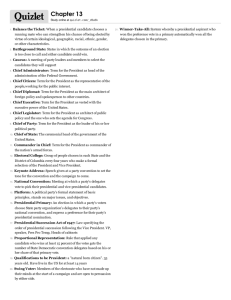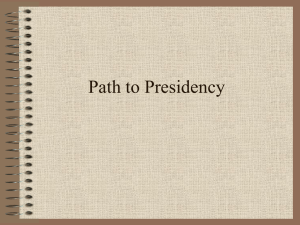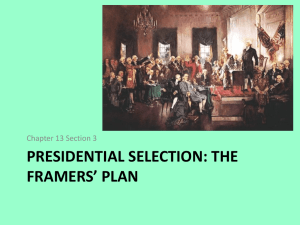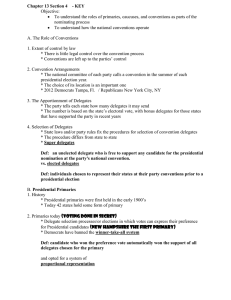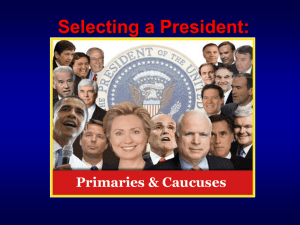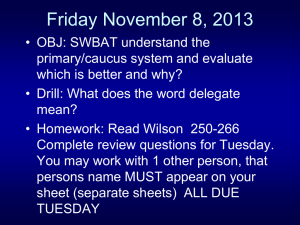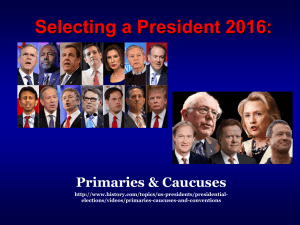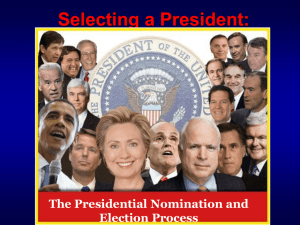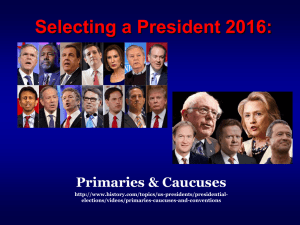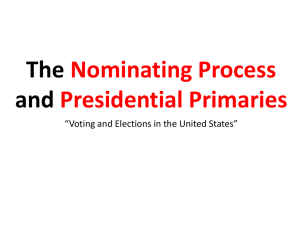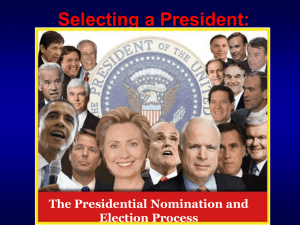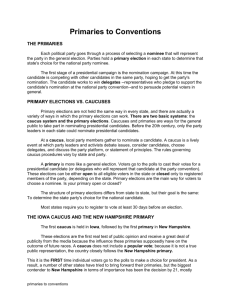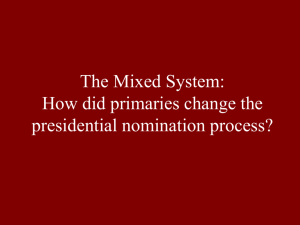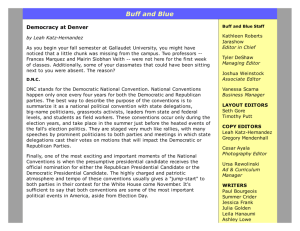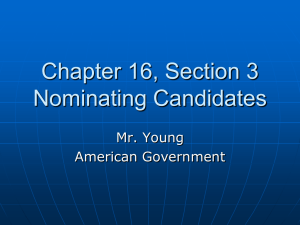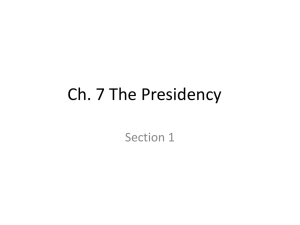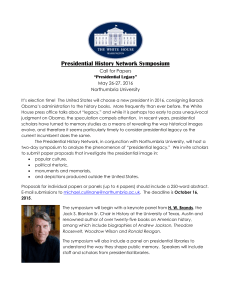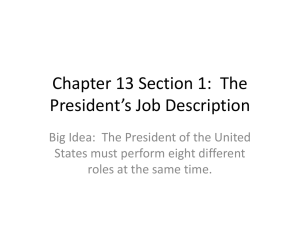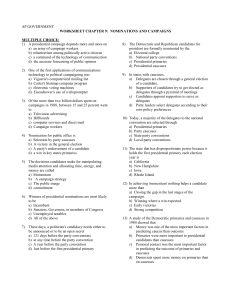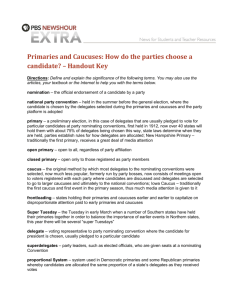13.4 Presidential Nominations
advertisement
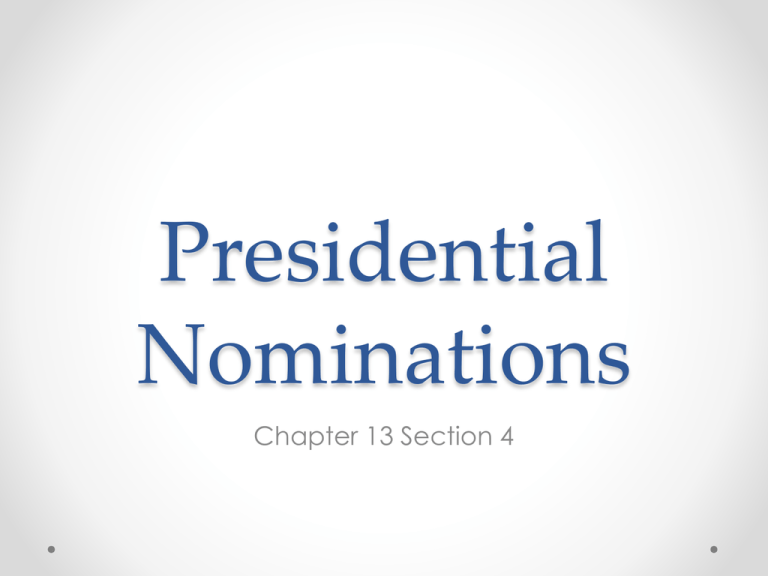
Presidential Nominations Chapter 13 Section 4 National Conventions • The nomination process is dictated by the two major parties • Each state sends delegates according to the electoral votes of that state… plus bonus delegates for people who support the party • Republicans typically leave nominations to state delegates, Democrats adopt more of a national approach Presidential Primaries • Presidential primary is an election in which the party’s voters: o Choose some or all of state delegates for the national convention o Express a preference for their presidential candidate • Front-loading refers to the efforts by many States to move their primary contests to earlier dates in the primary schedule o Multiplies the importance of name recognition and money o Forces contenders to mount and pay for campaigns in a number of widely separated States • Winner-take-all contests are awarded all the support of the delegate, while proportional representation receive support equivalent to their amount of supporters Primary Appraisal • For the party out of power, the primaries are often “knock-down, drag-out” affairs • Top personalities and factions in the party vie with one another for the presidential nomination. • For the party in power, the contest is generally not as hard-fought, because either the President himself is seeking reelection or has given his backing to someone he favors for the nomination. Primary Reform • One proposal is to hold a single, nationwide primary and have both parties choose their presidential candidates in those contests. o National conventions would be done away with or would be used only to pick the vice-presidential nominees and/or write party platforms. • Another proposal is the regional primary plan, in which a series of primaries would be held at two- or three-week intervals across the country. • Significant reform would require joint action by Congress, the several States, and both major parties. • Also, neither party wants to abandon the national convention, which is a unifying device. Caucuses • In state that do not have conventions, delegates to the national convention are selected by a system of local caucuses and district and/or State conventions. • A party’s voters gather in a closed meeting in local caucuses, most often at the precinct level. • There they express a preference among the contenders and select delegates to a local or district convention, where delegates to a State convention are elected. • Iowa and New Hampshire caucuses get the most attention because they take place so early Securing the Nomination • Three things happen here: o naming the party’s presidential and vice-presidential candidates o bring the various factions and the leading personalities in the party together in one place for a common purpose o adopting the party’s platform • Party hopes to: o promote party unity o capture the attention and interest of the country at large o generate support for the party’s ticket Who is Nominated? • Most have substantial, well-known records in public office • Most have served in elective offices • Many have been governors • Most are Protestants • Most have come from the larger States (although television and the Internet have made this less important) • Most have a pleasant, healthy appearance, seem to be happily married, and have an attractive family; few have been divorced; • A well-developed speaking ability and the ability to project well over television are also very important. Historic Race of 2008 • For first time, both major parties selected sitting members of the U.S. Senate as their candidates. • Hillary Clinton became the first woman to be seriously considered as the presidential candidate of a major party. • Barack Obama became the first African American presidential candidate of a major party (and then the first African American President). • John McCain was the oldest major party presidential candidate in history.
